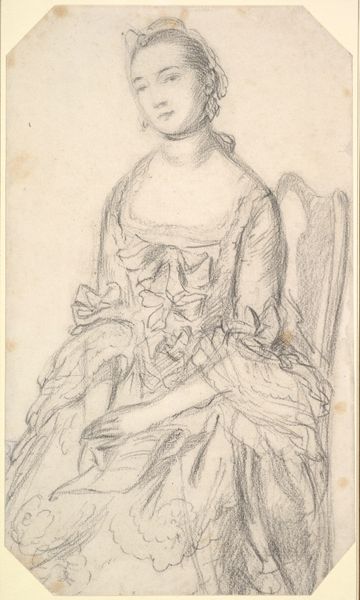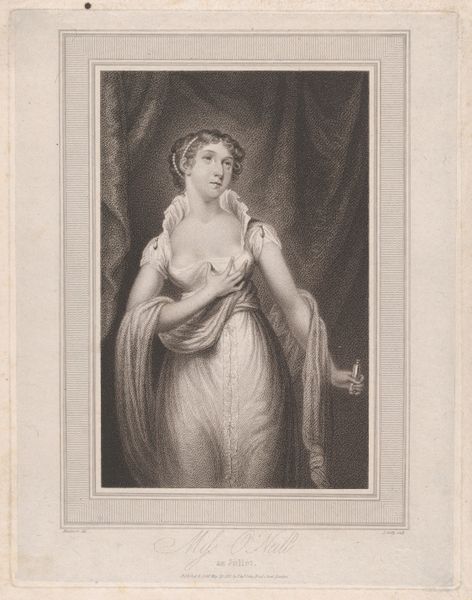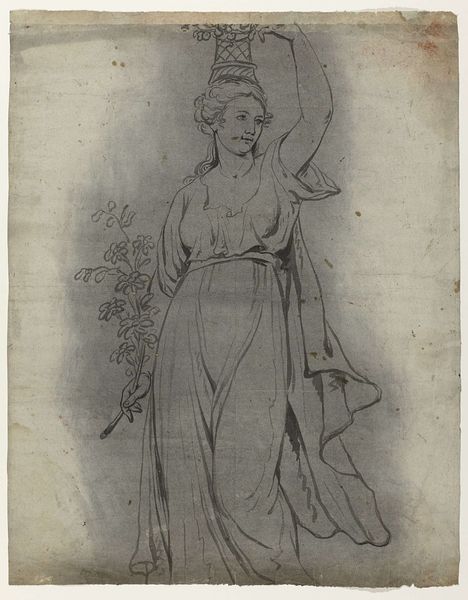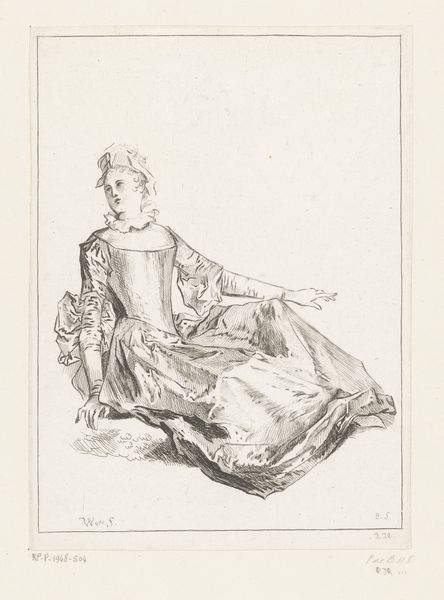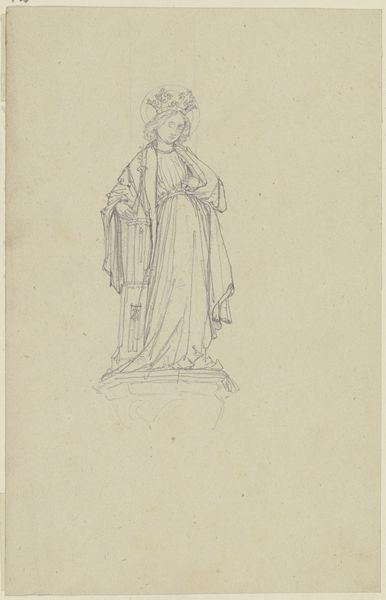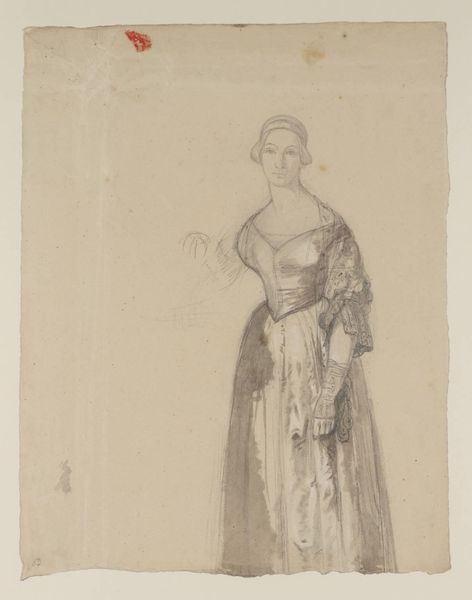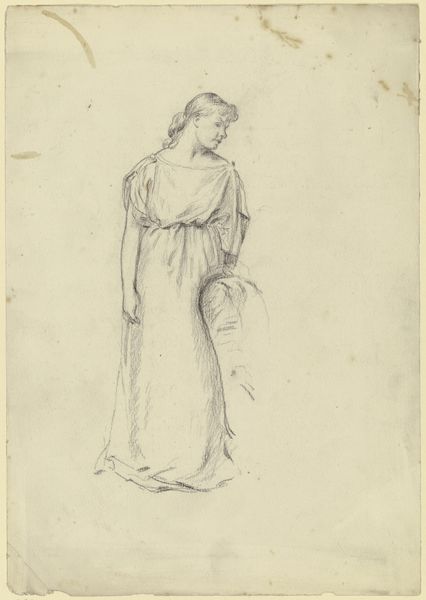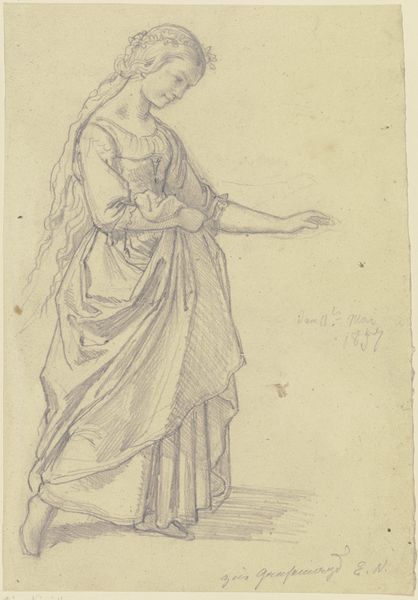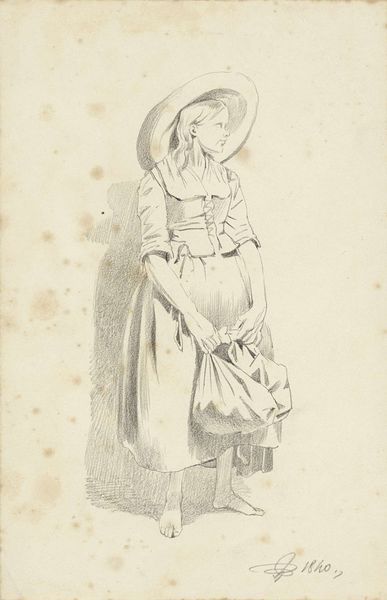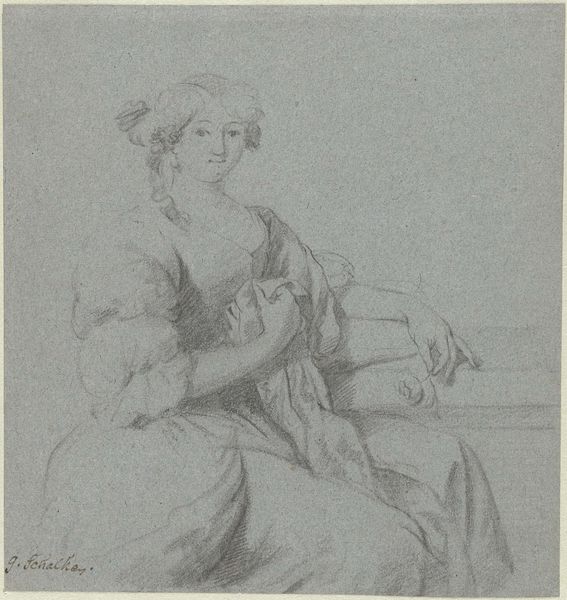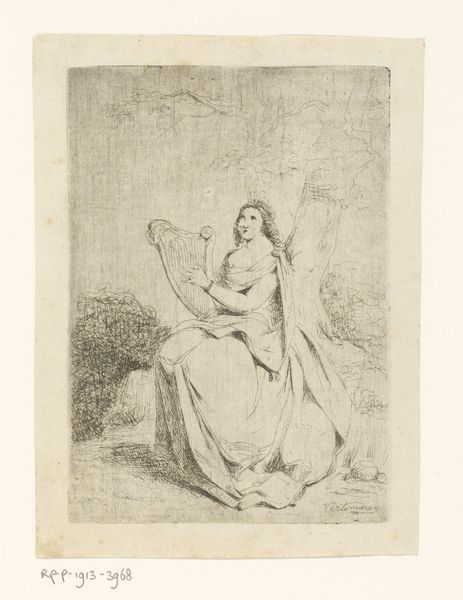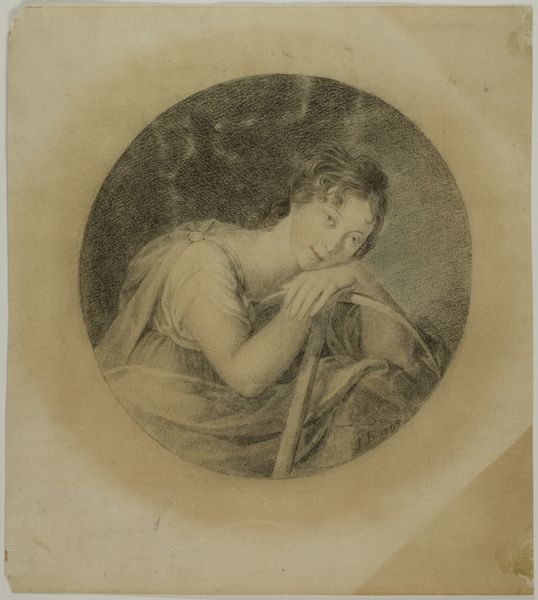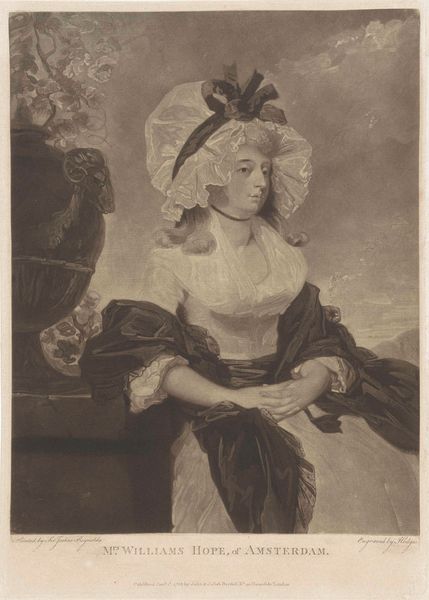
drawing, pencil
#
portrait
#
pencil drawn
#
drawing
#
figuration
#
pencil
#
pencil work
#
genre-painting
#
rococo
Dimensions: height 480 mm, width 305 mm
Copyright: Rijks Museum: Open Domain
Curator: This is "Herderin met een bloemenmand," or "Shepherdess with a Basket of Flowers," a pencil drawing created by an anonymous artist after 1763, showcasing Rococo aesthetics. Editor: The first thing I notice is the rather charming yet restrained use of line. There's a soft, almost dreamlike quality, even though the figure is quite defined. It reminds me of a swiftly executed preparatory drawing. Curator: Exactly! This drawing embodies the Rococo era's fascination with pastoral themes and idealized rural life. This interest spoke to the French aristocracy’s growing critique of courtly life. These idyllic images became immensely popular. Editor: Looking at the composition, it feels almost like a study in contrasts. We have the relaxed pose of the shepherdess counterpoised against the somewhat precise rendering of the dress and surrounding flora. It almost feels staged. Curator: Indeed, Rococo was very deliberate in that aspect. The art of the period often portrayed idealized versions of labor. Look closer: even the tools scattered around the shepherdess feel staged. They are cleaned and unused. Editor: I do love how the artist plays with the fall of light, particularly on the figure's gown and face. It really emphasizes the textural quality of the fabric. Did pencil become a mainstream medium for creating full studies like this during the 18th century? Curator: Increasingly so, yes. The rise of salons meant that artists needed to create portable works, that could easily be exhibited and then transported and stored efficiently, so drawing became a much more public art form. Editor: It’s quite refreshing to view something so detailed created in a relatively ephemeral medium, don't you think? It makes you wonder who this piece was created for. Curator: Agreed. Considering the broader context, drawings such as "Herderin met een bloemenmand," played a vital role in how eighteenth-century audiences constructed ideas about class and labor. Editor: And how this rather simple composition creates an impactful image, worth far more than just its delicate strokes of graphite. Curator: Indeed. This drawing truly opens up our understanding about a specific intersection in eighteenth-century European social life and the world of artistic production.
Comments
No comments
Be the first to comment and join the conversation on the ultimate creative platform.
